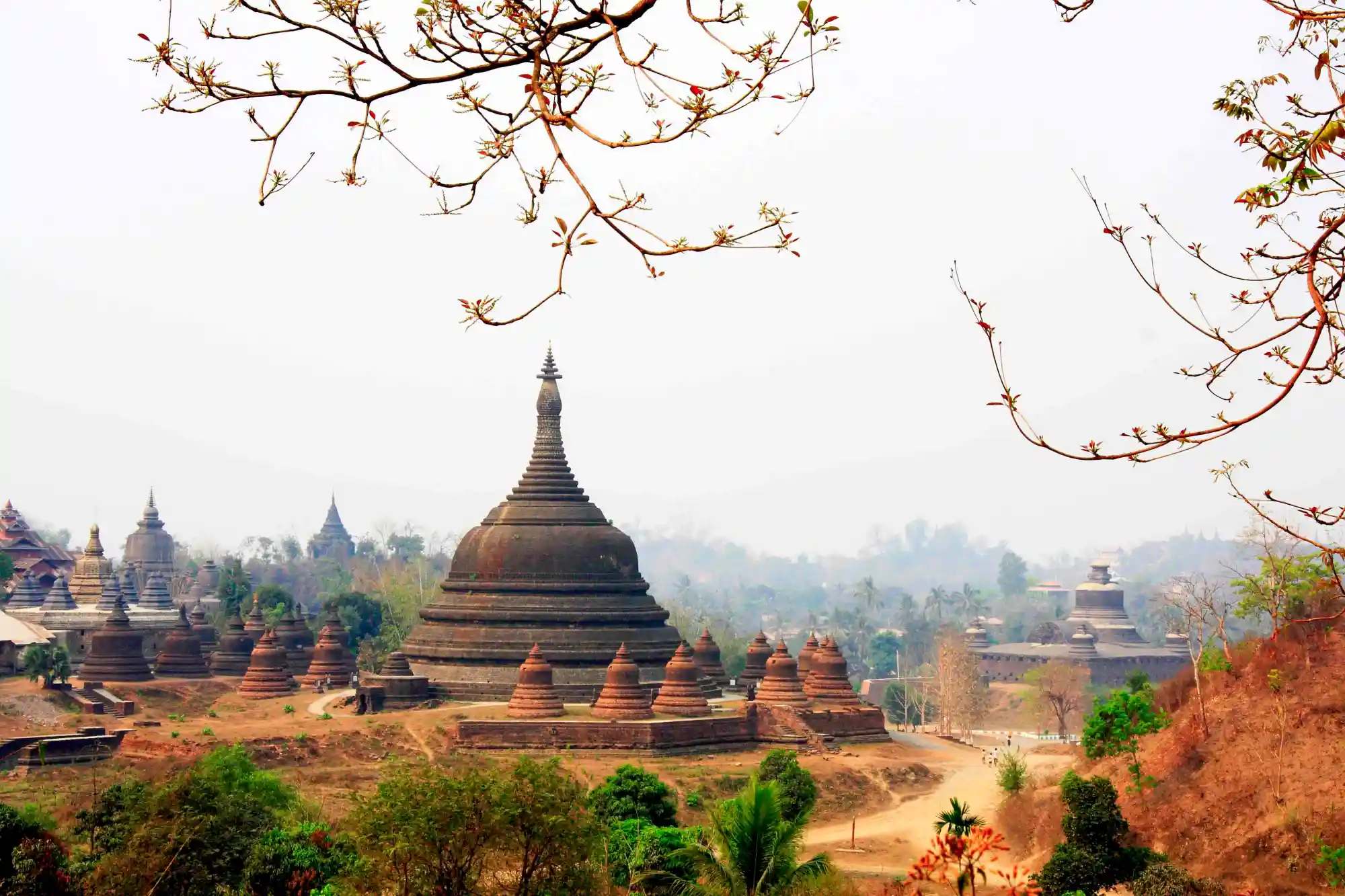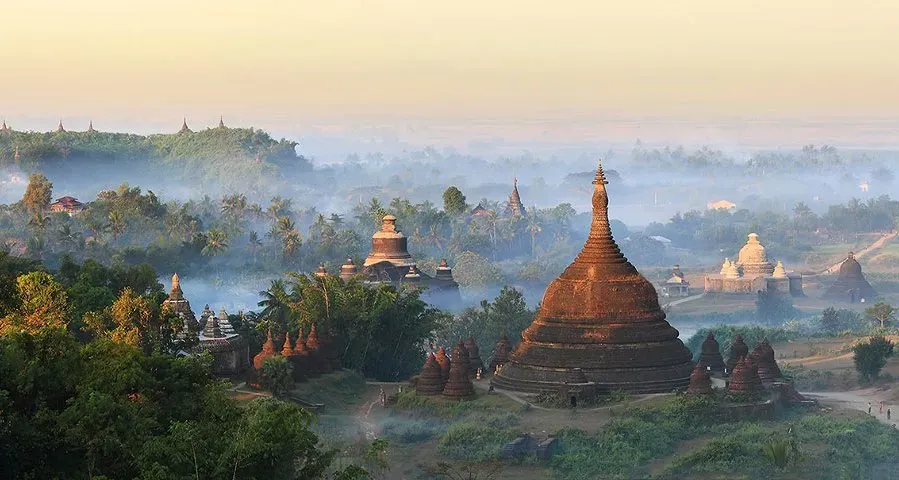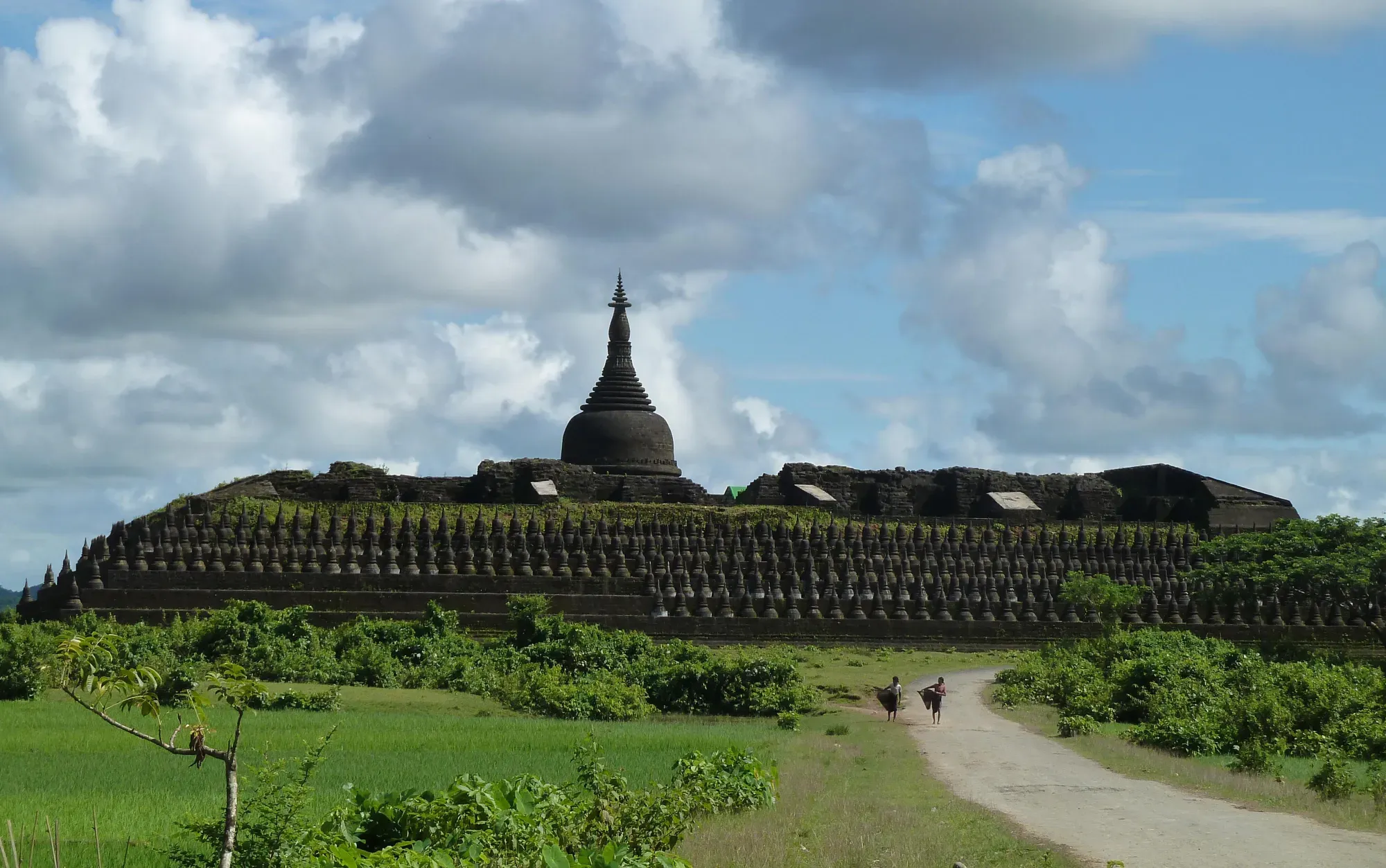A travel blog from Myanmar, written for Passion Passport. For context, this article was written after the first military crackdown on the Rohingya people, which took place from October 2016 to January 2017, and before the tragic genocide of the Rohingya began in August 2017. Please consider supporting the brave journalists at Myanmar Now as the people continue to face hardships under the regime of the military junta that overthrew the government in 2021.

When Rudyard Kipling wrote his famous poem about the road to Mandalay, he meant it not as a literal signposting (in fact, he never made it that far north) but in a more symbolic way: the journey to romance. It’s easy to fall in love with Myanmar. There’s sun-baked Bagan, with its dusty red-brick temples in their thousands; to the east, the calm charisma of Inle Lake, where the fishermen are ballet dancers and wild tomatoes grow in clusters on the surface of the water; and golden Mandalay itself, home to some of the country’s most enchanting hilltop pagodas, rising from the banks of the Irrawaddy River.
But there’s one place in Myanmar for which the journey is as much a part of the romance as the arrival. Several hours upriver from bustling Sittwe on the Bay of Bengal sits the fallen city of Mrauk U, once the centre of the kingdom of Arakan (now reduced to Rakhine State) that laid claim to much of western Myanmar and half of Bangladesh. If that doesn’t sound too arduous a trek, it should be said that reaching Sittwe in the first place requires a bit of steely ambition. From Bagan or Inle Lake, two slightly terrifying flights are required to land in the current Rakhine capital, where foreign faces are still uncommon enough to force double takes and side stares from locals.
Most visitors go no deeper into Rakhine than the developing Ngapali Beach at Thandwe, the destination of our first flight. Understandably, for much of the state, including parts of Sittwe, are still off-limits to non-nationals and controlled by the army, whose presence here is more strongly felt than in the other parts of the country that we visited. (The political plight of Rohingya Muslims in this region makes for a troubling read.) That said, at no point did we feel unsafe, from being cleared for entry at the airport by a military guard, who appeared quite bemused by our presence, to the moment we excitedly climbed into a local shared taxi for the last leg of our journey to the past.
And what a ride. Luxuries like actual suspension and effective A/C may be too much to expect in rural Myanmar, but if you’re into the concept of a chaotic mix of Burmese and international pop bangers blasted at high volume while bouncing down roads in varying states of completion — and I definitely am — then this is the mode of transport for you. For a more comfortable but less scenic trip that takes roughly the same amount of time, you can take a boat along the Kaladan River and watch the muddy banks roll by while puzzling over a problematically sexist Burmese rom-com playing on the on-board TV. We did both, but the bus was best.

As we drove further inland, the jungle-covered hills that give Mrauk U the edge over low-lying Bagan began to take shape, but only in the final few minutes of the drive did the first of the old city’s many hundreds of temples appear on the horizon. After more than 12 hours of travel from Inle Lake, little more than 500 miles away, we had finally arrived. The sun was setting on the town as we wrangled with Google Maps to locate our hotel, tucked away down a dirt track, so there was barely time to seek out a local meal in one of many local blackouts before we folded into sleep.
In its 16th century heyday, Mrauk U (pronounced ‘myow-oo’ or ‘mrow-oo’, depending on whom you ask) was the home of the feared King Min Bin, who ruled the Bay of Bengal with a large fleet of warships and oversaw the construction of many of the city’s most famous structures. One of these is the golden Shwe Taung pagoda, built on top of one of Mrauk U’s highest hills. Since the last Rakhine uprising, the army have closed off the easy access route so the only way up is to scramble through the thorny scrub on a narrow and sometimes near invisible path; needless to say, hiring a guide is a must. Our man Lin Lin looked relieved when we made it to the peak unscathed, though already dripping wet from the stifling humidity. Slipping off our sandals, we turned to face the panorama.
Standing there in the purple dawn, watching plumes of grey smoke drift across the chaparral, we caught our breath and then lost it again. Bagan is impressive, sure, but the temples of Mrauk U are something else. Many are carved from dark grey stone rather than brick, giving them a more imposing air. They are more diverse too; from the bell-shaped stupas of Ratanabon Zedi and King Min Bin’s signature Shittaung pagoda to the audacious Dukkanthein, a majestic fortress-like structure, and the largest and most unusual temple, Kotaung, there’s an eyeful in every direction.
Just as the Blue Mosque back home in Istanbul was built to outshine the nearby Hagia Sophia, Min Bin’s son had Kotaung built to dwarf his father’s crowning achievement at Shittaung. So while Shittaung could boast an impressive 80,000 images of Buddha, 90,000 could be found at Kotaung. Earthquakes and thieves have gradually diminished that count, but enough remain to give the place a dilapidated wonderland feel as you walk barefoot through its galleries of broken figures.

At its peak, Mrauk U covered a much larger area but most of the must-sees are within a radius of just a few square miles, centered around the walls of the old palace with the pretty Lattsaykan Lake to the south. In the opposite direction lies what’s left of the kingdom of Wethali, where we found a truly enormous Buddha statue said to be carved from a single stone, and a troop of monkeys too.
Back in Mrauk U, we hustled up the so-called ‘Discovery Mountain’ to catch a final Rakhine sunset. Unlike in busier Bagan, we were totally alone — just Lin Lin, us and a billion mosquitoes. The sun blazed out and turned red as it sank behind the clouds left over from an earlier monsoon, casting a colourful stain that stretched across the plains to the west. It was a beautiful sight, but the most memorable moment came only as we drove away; we saw a young monk jumping between two bell-shaped stupas, perfectly framed against the pinking sky. It’s the picture of Mrauk U that lingers most in my mind, though I never took it, and somehow that’s entirely fitting for such a deeply esoteric and mystical place.
Images courtesy of Asia Tour Advisor.

